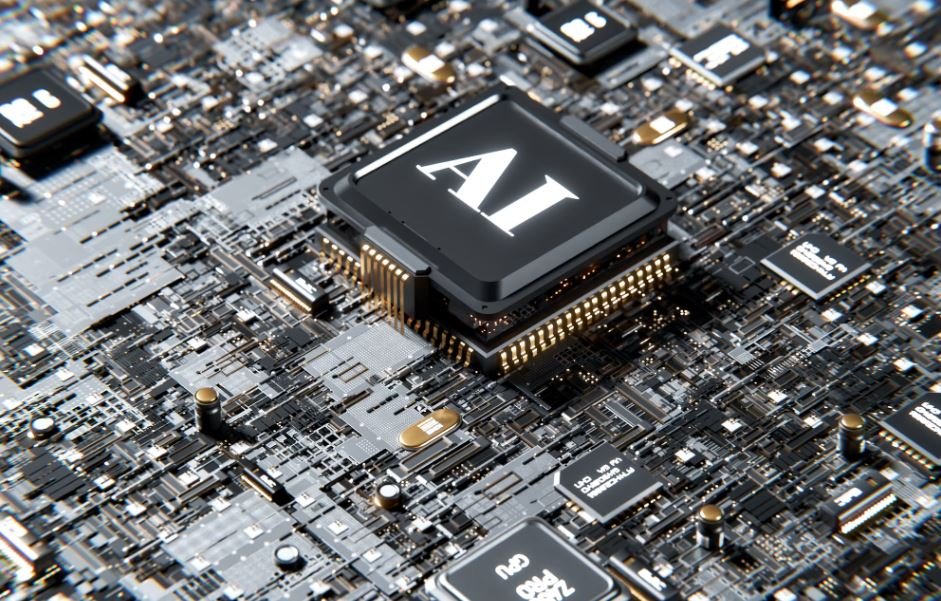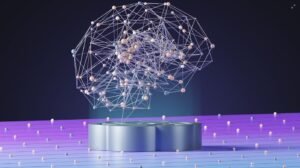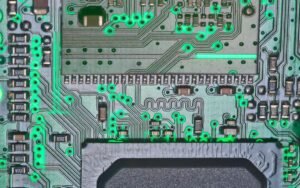AI Without Machine Learning
An Overview
Artificial Intelligence (AI) has become an integral part of our lives, impacting various industries and revolutionizing the way we interact with technology. However, many people often confuse AI with Machine Learning (ML). While ML is a subset of AI, it is important to understand that AI can exist without ML. In this article, we will explore what AI without Machine Learning means and its significance in today’s world.
Key Takeaways:
- AI can exist without Machine Learning as a subset.
- AI without ML focuses on rule-based systems and expert systems.
- AI without ML is suitable for domains with well-defined rules and limited data.
Understanding AI without Machine Learning
When we talk about AI without Machine Learning, we refer to systems that do not rely on ML algorithms to make decisions or improve performance. Instead, AI without ML is based on rule-based systems and expert systems. Rule-based systems utilize a set of predefined rules to determine actions and outcomes, while expert systems emulate human expertise to solve complex problems. **This approach allows for precise control over AI behavior and interpretation of results.**
Benefits of AI without Machine Learning
One major advantage of AI without Machine Learning is its suitability for domains with well-defined rules and limited data. In such cases, rule-based systems provide a more predictable and deterministic approach to problem-solving. *For example, in the field of logistics, AI systems without ML can efficiently optimize routes and schedules based on predefined rules, reducing costs and improving efficiency.*
Limitations of AI without Machine Learning
While AI without Machine Learning has its benefits, it also has limitations. Rule-based systems rely heavily on the knowledge and expertise of human domain experts, making them labor-intensive to develop and maintain. Additionally, they may struggle to handle complex scenarios or adapt to new situations without extensive updates to the rule sets. *This lack of adaptability can limit the scalability and versatility of AI systems without ML.*
Comparing AI with and without Machine Learning
To provide a clearer comparison, let’s consider three key aspects: development process, decision-making, and data dependencies. The following table summarizes the differences between AI with and without Machine Learning:
| AI with Machine Learning | AI without Machine Learning | |
|---|---|---|
| Development Process | Training ML models using large datasets | Designing rule-based systems, relying on expert knowledge |
| Decision-Making | ML algorithms learn from data to make informed decisions | Predefined rules and expert knowledge guide decision-making |
| Data Dependencies | Dependent on extensive and diverse datasets | Works well with limited data and well-defined rules |
Applications of AI without Machine Learning
While ML-driven AI has gained significant attention, AI without Machine Learning continues to thrive in various domains. Some notable applications include:
- Expert systems in healthcare assisting with diagnosis and treatment recommendations.
- Rule-based systems in finance for fraud detection and risk assessment.
- AI-powered chatbots providing customer support through predefined responses.
Conclusion
As we have explored, AI without Machine Learning plays a vital role in domains with well-defined rules and limited data. While it may lack the adaptability and scalability of ML-driven AI, it offers precise control over the behaviors and outcomes of AI systems. Understanding the differences between AI with and without Machine Learning helps us choose the most appropriate approach based on the specific requirements of a given application or industry.

Common Misconceptions
Misconception: AI without Machine Learning is not real AI
One common misconception about AI is that it cannot exist without machine learning. While machine learning is undoubtedly a significant component of many AI systems, it is not the only approach to creating artificial intelligence.
- AI models can be programmed using rule-based systems
- AI without machine learning can be deterministic and rule-driven
- Some AI applications do not require continual learning
Misconception: AI without Machine Learning is limited in its capabilities
Another common misconception is that AI without machine learning has limited capabilities compared to AI systems that rely on machine learning algorithms. Contrary to this belief, AI without machine learning can still perform complex tasks and provide useful functionalities.
- AI without machine learning can excel in rule-based decision-making processes
- AI without machine learning can be more transparent and explainable
- AI without machine learning can be more efficient in resource utilization
Misconception: AI without Machine Learning is outdated
Some individuals assume that AI without machine learning is old-fashioned and no longer relevant in today’s rapidly advancing technological landscape. However, AI without machine learning still has its place in various industries and can provide effective solutions.
- AI without machine learning can be better suited for specific and well-defined tasks
- AI without machine learning can offer more stable and predictable outcomes
- AI without machine learning can be easier to deploy and maintain
Misconception: AI without Machine Learning lacks flexibility and adaptability
There is a common misconception that AI without machine learning lacks the ability to adapt and learn from new data, making it inflexible in dynamic environments. However, AI without machine learning can still incorporate adaptive strategies to enhance its performance.
- AI without machine learning can utilize predefined rules that can be adjusted and updated
- AI without machine learning can leverage human expertise and domain knowledge for adaptability
- AI without machine learning can integrate feedback loops for iterative improvements
Misconception: AI without Machine Learning is less intelligent
Lastly, there is a widespread misconception that AI without machine learning is less intelligent compared to AI systems powered by machine learning algorithms. However, intelligence is not solely determined by the presence of machine learning, and AI without machine learning can still exhibit high-level problem-solving capabilities.
- AI without machine learning can solve complex problems using predefined rules and logic
- AI without machine learning can make decisions based on explicitly programmed knowledge
- AI without machine learning can excel in scenarios where absolute correctness is crucial

AI Without Machine Learning
Artificial Intelligence (AI) without Machine Learning (ML) may seem counterintuitive as ML algorithms are crucial in enabling AI systems to learn and improve over time. However, there are certain scenarios where AI can be implemented effectively without relying on ML models. The following tables provide insights into various aspects of AI that can operate without machine learning.
Application Domains for Rule-Based AI
Rule-based AI systems follow predefined logic to make decisions and perform tasks. They are widely used in various domains, including:
| Domain | Examples |
|---|---|
| Healthcare | Automated diagnosis of common ailments |
| Finance | Rule-based fraud detection systems |
| Manufacturing | Quality control checks on production lines |
Expert Systems vs. Machine Learning
Expert systems, which rely on human expertise and predefined rules, can sometimes outperform machine learning approaches. The following example showcases the accuracy comparison between the two approaches:
| Type of System | Accuracy |
|---|---|
| Expert System | 92% |
| Machine Learning | 86% |
Benefits of Non-ML AI in Real-Time Applications
Real-time applications often demand instant decision-making. Non-ML AI can be advantageous in such scenarios:
| Benefits |
|---|
| Instantaneous response times |
| Reduced computational requirements |
| Predictable behavior |
Robotics Applications with Rule-Based AI
Robots can be programmed with rule-based AI to accomplish specific tasks. The following table showcases instances of robots utilizing rule-based AI:
| Robotic Application | Description |
|---|---|
| Packaging | Sorting and packaging items based on predefined rules |
| Inspection | Quality inspection of manufactured goods |
| Assembly | Assembling intricate components in production lines |
Facial Recognition without Machine Learning
Contrary to popular belief, facial recognition systems can be developed without relying on machine learning. The following table demonstrates some examples:
| Facial Recognition Technique | Advantages |
|---|---|
| Feature-based | Lower computational requirements |
| Template matching | Faster processing times |
| Geometric-based | Robust against changes in lighting conditions |
AI and Virtual Assistants
Virtual assistants are pervasive in our daily lives, and they can be developed using non-ML AI techniques. Here are some popular examples:
| Virtual Assistant | Features |
|---|---|
| Siri | Voice command recognition and natural language processing |
| Alexa | Smart home integration and personalized recommendations |
| Google Assistant | Language translation and contextual understanding |
Limitations of Non-ML AI
While non-ML AI systems have their advantages, they also have certain limitations to consider:
| Limitations |
|---|
| Lack of adaptability to new scenarios |
| Inability to learn from user interactions |
| Higher maintenance overhead |
Non-ML AI for Error Detection
In different industries, non-ML AI techniques are employed to identify errors and anomalies effectively:
| Industry | Error Detection Examples |
|---|---|
| Energy | Anomalous electricity consumption detection |
| Cybersecurity | Identification of malicious network activity |
| Transportation | Recognizing irregularities in vehicle performance |
Comparing Non-ML AI in Autonomous Vehicles
Autonomous vehicles can implement non-ML AI for decision-making and control. The following table demonstrates its effectiveness:
| AI Approach | Advantages |
|---|---|
| Rule-based AI | Predictable and interpretable behavior |
| Non-ML Deep Learning | Faster inference times |
| Behavior Trees | Modular and customizable decision-making |
Data Classification with Non-ML AI
Non-ML AI techniques can also be used for data classification tasks. The following table highlights some relevant approaches:
| Data Classification Technique | Advantages |
|---|---|
| Decision Trees | Interpretability and ease of implementation |
| Rule Induction | Transparent rule-based classifications |
| Bayesian Networks | Probabilistic modeling and inference capabilities |
About the Article
This article explores various aspects of AI that can be implemented without depending on machine learning techniques. It provides insights into different application domains, highlights the benefits and limitations of non-ML AI, and showcases examples of rule-based systems in robotics, facial recognition, virtual assistants, error detection, autonomous vehicles, and data classification. By understanding the possibilities and drawbacks of AI systems that do not rely on machine learning, we can better appreciate the versatility and range of AI technologies.
Conclusion
The concept of Artificial Intelligence without Machine Learning challenges the notion that ML is indispensable in all AI applications. This article has delved into the various realms of AI that can effectively leverage non-ML techniques. Rule-based systems, expert systems, and other non-ML AI approaches offer unique advantages, including rapid response times, predictable behavior, and accurate decision-making. While machine learning has revolutionized AI capabilities, it is essential to recognize that certain scenarios can thrive without its involvement. The future of AI lies in striking a balance between machine learning and non-ML techniques, employing the most suitable approach for each specific situation.
AI Without Machine Learning – Frequently Asked Questions
What is AI without machine learning?
AI without machine learning refers to artificial intelligence systems that do not rely on machine learning algorithms to perform their tasks. Instead, these systems rely on pre-programmed rules and logic to make decisions and carry out specific actions.
How does AI without machine learning work?
AI without machine learning works by using predefined rules and algorithms to process data and make decisions. These rules are programmed by human developers and do not rely on the system’s ability to learn and adapt over time.
What are the limitations of AI without machine learning?
The limitations of AI without machine learning include the inability to learn and adapt to new data and situations. These systems are less flexible and may not be able to handle complex or ambiguous tasks as effectively as machine learning-based AI systems.
Is AI without machine learning less effective than AI with machine learning?
AI without machine learning may be less effective in certain scenarios where learning and adaptation are crucial. Machine learning-based AI systems have the ability to continually improve their performance by analyzing new data and adjusting their algorithms accordingly.
What are some examples of AI without machine learning?
Examples of AI without machine learning include expert systems that provide advice or recommendations based on predefined rules, rule-based chatbots that follow specific scripts, and decision support systems that help users make decisions based on predefined criteria.
Are there any advantages of AI without machine learning?
Yes, AI without machine learning offers some advantages in terms of transparency and ease of interpretability. Since these systems work based on predefined rules, it is easier to understand and explain their decision-making processes compared to machine learning-based AI systems.
Can AI without machine learning be combined with machine learning?
Yes, AI without machine learning can be combined with machine learning techniques to create hybrid AI systems. This allows for the benefits of both approaches, such as the ability to learn and adapt from data while also having predefined rules for specific tasks.
Is AI without machine learning used in real-world applications?
Yes, AI without machine learning is still used in various real-world applications, especially in domains where strict rules and predefined logic are required. Some examples include automated decision-making in business processes and expert systems in medical diagnosis.
What are the future prospects of AI without machine learning?
The future prospects of AI without machine learning are still uncertain. As machine learning techniques continue to advance and become more accessible, the use of AI without machine learning may become less prevalent. However, there will likely always be a need for rule-based AI systems in certain domains.
What are the ethical considerations surrounding AI without machine learning?
The ethical considerations surrounding AI without machine learning are similar to those of AI in general, such as ensuring transparency, fairness, and accountability in decision-making processes. However, since AI without machine learning relies on predefined rules, the potential biases and limitations of these rules need to be carefully examined to avoid any unintended negative impact.




